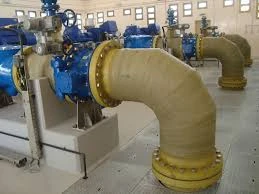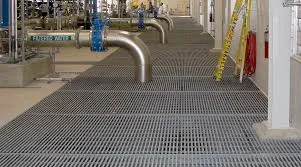
-
 Afrikaans
Afrikaans -
 Albanian
Albanian -
 Amharic
Amharic -
 Arabic
Arabic -
 Armenian
Armenian -
 Azerbaijani
Azerbaijani -
 Basque
Basque -
 Belarusian
Belarusian -
 Bengali
Bengali -
 Bosnian
Bosnian -
 Bulgarian
Bulgarian -
 Catalan
Catalan -
 Cebuano
Cebuano -
 China
China -
 China (Taiwan)
China (Taiwan) -
 Corsican
Corsican -
 Croatian
Croatian -
 Czech
Czech -
 Danish
Danish -
 Dutch
Dutch -
 English
English -
 Esperanto
Esperanto -
 Estonian
Estonian -
 Finnish
Finnish -
 French
French -
 Frisian
Frisian -
 Galician
Galician -
 Georgian
Georgian -
 German
German -
 Greek
Greek -
 Gujarati
Gujarati -
 Haitian Creole
Haitian Creole -
 hausa
hausa -
 hawaiian
hawaiian -
 Hebrew
Hebrew -
 Hindi
Hindi -
 Miao
Miao -
 Hungarian
Hungarian -
 Icelandic
Icelandic -
 igbo
igbo -
 Indonesian
Indonesian -
 irish
irish -
 Italian
Italian -
 Japanese
Japanese -
 Javanese
Javanese -
 Kannada
Kannada -
 kazakh
kazakh -
 Khmer
Khmer -
 Rwandese
Rwandese -
 Korean
Korean -
 Kurdish
Kurdish -
 Kyrgyz
Kyrgyz -
 Lao
Lao -
 Latin
Latin -
 Latvian
Latvian -
 Lithuanian
Lithuanian -
 Luxembourgish
Luxembourgish -
 Macedonian
Macedonian -
 Malgashi
Malgashi -
 Malay
Malay -
 Malayalam
Malayalam -
 Maltese
Maltese -
 Maori
Maori -
 Marathi
Marathi -
 Mongolian
Mongolian -
 Myanmar
Myanmar -
 Nepali
Nepali -
 Norwegian
Norwegian -
 Norwegian
Norwegian -
 Occitan
Occitan -
 Pashto
Pashto -
 Persian
Persian -
 Polish
Polish -
 Portuguese
Portuguese -
 Punjabi
Punjabi -
 Romanian
Romanian -
 Russian
Russian -
 Samoan
Samoan -
 Scottish Gaelic
Scottish Gaelic -
 Serbian
Serbian -
 Sesotho
Sesotho -
 Shona
Shona -
 Sindhi
Sindhi -
 Sinhala
Sinhala -
 Slovak
Slovak -
 Slovenian
Slovenian -
 Somali
Somali -
 Spanish
Spanish -
 Sundanese
Sundanese -
 Swahili
Swahili -
 Swedish
Swedish -
 Tagalog
Tagalog -
 Tajik
Tajik -
 Tamil
Tamil -
 Tatar
Tatar -
 Telugu
Telugu -
 Thai
Thai -
 Turkish
Turkish -
 Turkmen
Turkmen -
 Ukrainian
Ukrainian -
 Urdu
Urdu -
 Uighur
Uighur -
 Uzbek
Uzbek -
 Vietnamese
Vietnamese -
 Welsh
Welsh -
 Bantu
Bantu -
 Yiddish
Yiddish -
 Yoruba
Yoruba -
 Zulu
Zulu
Feb . 13, 2025 22:15
Back to list
frp clarifier
In the realm of wastewater treatment and industrial processes, the FRP (Fiberglass Reinforced Plastic) clarifier stands out as a pivotal component, drawing attention due to its advanced structural and operational benefits. Having explored its various applications in environmental engineering, one appreciates its distinct advantages over traditional materials like concrete or steel.
From an authoritative standpoint, numerous case studies and academic research have vouched for the performance indicators of FRP clarifiers. A common finding supports their ability to maintain structural integrity even under extreme operational conditions. Whether dealing with large fluctuations in temperature, pressure, or chemical composition, these units offer unwavering reliability. This has been validated by their successful application across numerous high-profile projects worldwide, often attested by industry-leading engineers and environmental scientists. Trustworthiness, derived from both empirical data and anecdotal evidence from industry veterans, underscores the importance of choosing quality FRP clarifiers for critical applications. Manufacturers with a proven track record provide comprehensive support, from initial design consultation through to after-sales service, ensuring that the investment in FRP technology delivers expected returns. This includes offering warranties and performance guarantees as part of the procurement package, providing decision-makers with peace of mind. In conclusion, the integration of FRP clarifiers into treatment systems represents a significant upgrade in various industrial sectors. The combined effect of their corrosion resistance, lightweight composition, customizable design, and demonstrated reliability contributes to a more sustainable, efficient, and cost-effective operation. Their adoption not only meets the immediate demands of modern industries but also aligns with long-term environmental and operational goals. Thus, the value proposition of FRP clarifiers is clear, and their role in future-proofing processes cannot be overstated.


From an authoritative standpoint, numerous case studies and academic research have vouched for the performance indicators of FRP clarifiers. A common finding supports their ability to maintain structural integrity even under extreme operational conditions. Whether dealing with large fluctuations in temperature, pressure, or chemical composition, these units offer unwavering reliability. This has been validated by their successful application across numerous high-profile projects worldwide, often attested by industry-leading engineers and environmental scientists. Trustworthiness, derived from both empirical data and anecdotal evidence from industry veterans, underscores the importance of choosing quality FRP clarifiers for critical applications. Manufacturers with a proven track record provide comprehensive support, from initial design consultation through to after-sales service, ensuring that the investment in FRP technology delivers expected returns. This includes offering warranties and performance guarantees as part of the procurement package, providing decision-makers with peace of mind. In conclusion, the integration of FRP clarifiers into treatment systems represents a significant upgrade in various industrial sectors. The combined effect of their corrosion resistance, lightweight composition, customizable design, and demonstrated reliability contributes to a more sustainable, efficient, and cost-effective operation. Their adoption not only meets the immediate demands of modern industries but also aligns with long-term environmental and operational goals. Thus, the value proposition of FRP clarifiers is clear, and their role in future-proofing processes cannot be overstated.
Next:
Related Products









